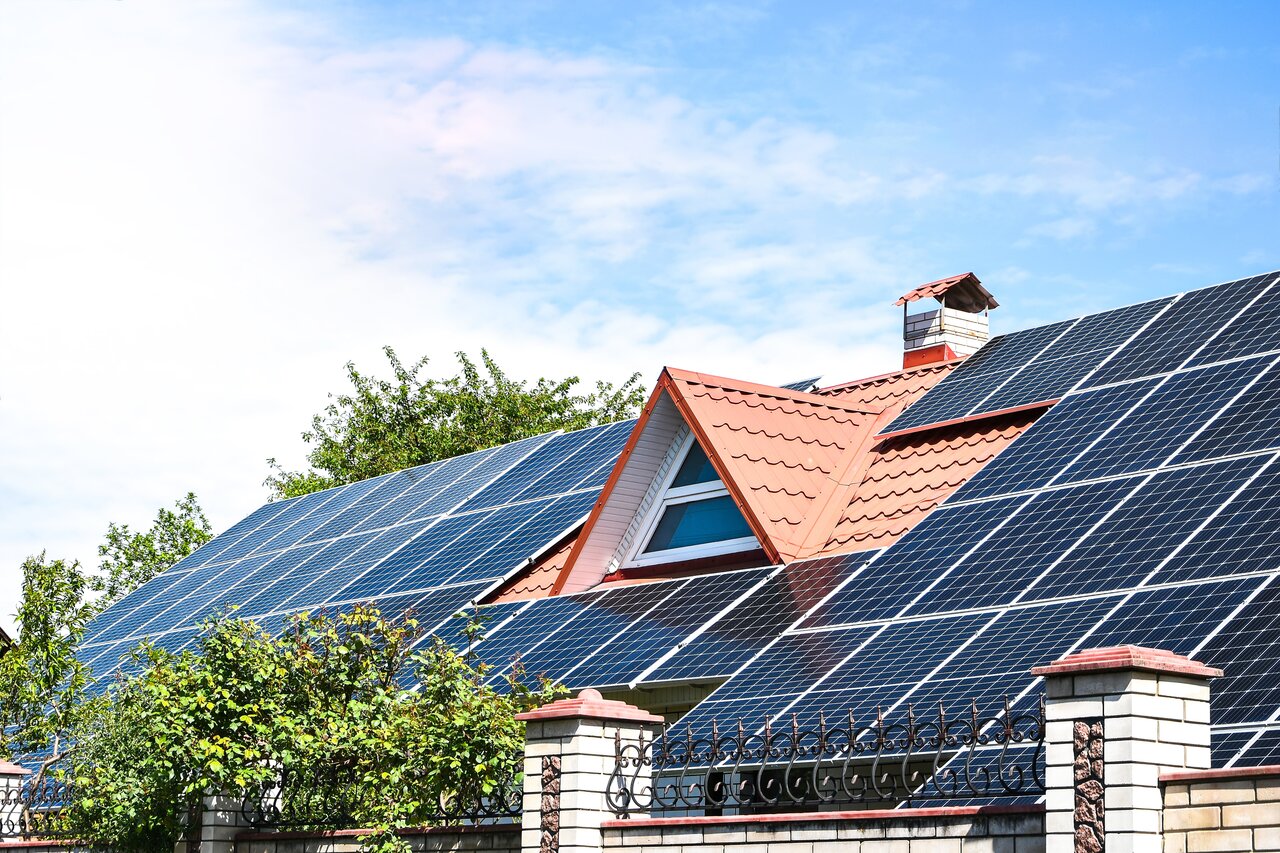Solar Roof

Definition: A solar roof is a roofing system that integrates solar panels or photovoltaic (PV) cells directly into the roof’s structure. Unlike traditional solar panels that are mounted on top of an existing roof, a solar roof incorporates the energy-generating technology within the roofing materials themselves. This allows the roof to function as both a protective covering and a source of renewable energy, producing electricity from sunlight and contributing to a building’s energy efficiency.
Types of Solar Roofs:
- Solar Shingles: Also known as solar tiles, these are individual roofing shingles with embedded solar cells. Solar shingles are designed to look similar to conventional roofing materials, such as asphalt shingles or slate, providing a more aesthetic alternative to traditional solar panels.
- Solar Tiles: Solar tiles are larger units, often resembling traditional tiles, with embedded photovoltaic cells. They are typically made of durable materials like tempered glass and are designed to be weather-resistant and long-lasting.
- Building-Integrated Photovoltaics (BIPV): BIPV systems integrate solar cells directly into construction materials, including roofing, facades, and even windows. In the case of a solar roof, BIPV tiles or shingles form a seamless part of the roof’s design.
Solar Roof Installation Process:
- Roof Assessment: A professional assessment is conducted to determine the roof’s suitability for a solar installation, considering factors like slope, orientation, and shading.
- Electrical Setup: Electrical components, including an inverter and (if applicable) battery storage system, are installed to convert solar energy into usable electricity and store any excess power.
- Solar Roofing Installation: Solar shingles, tiles, or BIPV materials are installed directly onto the roof deck, much like traditional roofing materials, with each piece interconnected to create a unified energy-generating system.
- Connection to the Grid: In grid-tied systems, the solar roof is connected to the building’s electrical panel and the local utility grid, allowing any excess power to be fed back to the grid for potential credits.
Solar Roof Maintenance Tips:
- Periodic Cleaning: To maintain peak efficiency, solar roofs should be cleaned as needed to remove dust, debris, and snow that could obstruct sunlight.
- Professional Inspections: Routine inspections by a professional can help detect issues with wiring, connectivity, or individual cells, ensuring the system operates effectively.
- Monitor Output: Regular monitoring of energy output can help identify any dips in performance, which may indicate the need for cleaning or minor repairs.
Potential Incentives:
- Tax Credits and Rebates: Many governments offer tax credits, rebates, or incentives to homeowners and businesses that install solar energy systems, including solar roofs.
- Net Metering: In areas with net metering, homeowners can receive credits for the excess energy their solar roof produces, allowing them to offset future energy costs.
Solar roofs are a powerful and sustainable choice for generating renewable energy directly from a building’s roof. By integrating energy production with the roofing material itself, they offer an innovative, efficient, and aesthetically pleasing alternative to traditional solar panels, contributing to both energy savings and environmental benefits over the long term.
See our works
Giving you a sense of what a metal roof will look like in your home of commercial property





